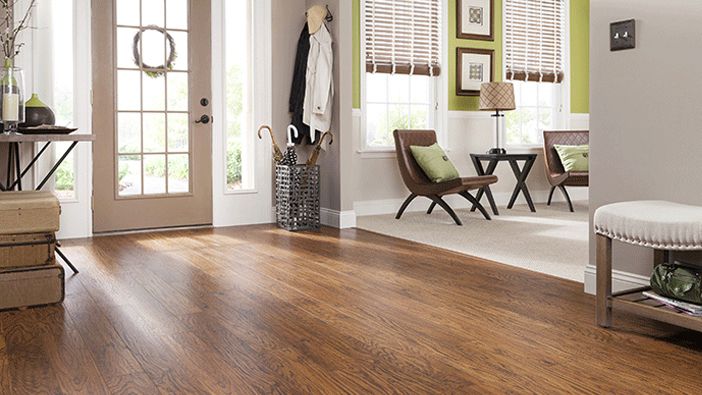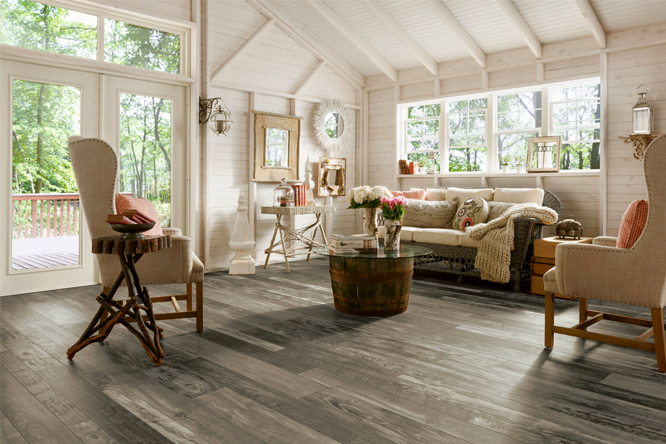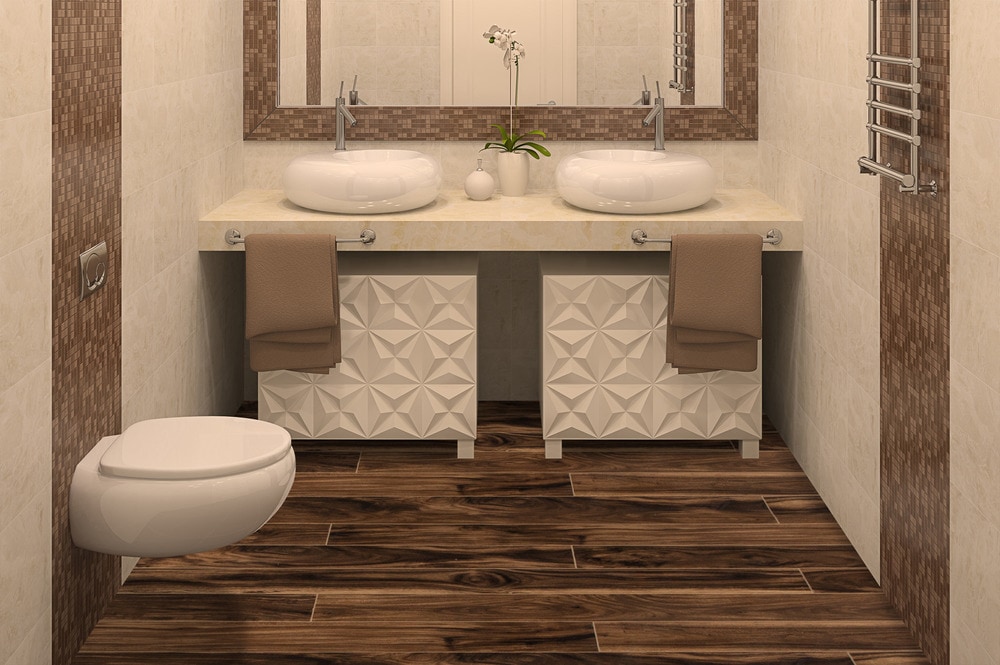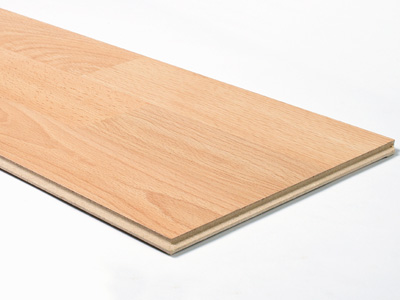Laminate Floor Buying Guide
What Is Laminate Flooring?
Laminate flooring is a synthetic product made of several layers that are sealed together in the lamination process. Designed to be affordable and durable, laminate flooring consists of four distinct components:
Wear Layer
The wear layer helps resist scratches from daily wear, creates an easy-to-clean surface and maintains a fade- and stain-resistant appearance.
Décor Layer
The décor layer is a printed image that recreates the natural look of wood, tile or stone.
Core Layer
The core layer gives laminate its structure and dent-resistant properties. Laminate flooring is much more resistant to dents than real hardwood flooring.
Backer Layer
The final backer layer provides additional support and stability.

How to Choose the Best Laminate Floor
How is laminate flooring constructed?
Each layer in the laminate flooring structure serves a distinct purpose, but they all work together to make it reliably durable. What the layers are called and the exact specifications for each layer may differ depending on the manufacturer and the product, but here’s what you’ll find in Armstrong Flooring’s laminate flooring products:
– Wear Layer – VisionGuard® is a clear, hardened melamine layer that protects the floor from spills, stains and fading and resists scuffs and scratches. Many of our high-quality laminate flooring products actually have Commercial VisionGuard®, which has a higher abrasion test rating and provides ultimate protection.
– Design Layer – A photographic image displays highly realistic visuals of hardwood or natural stone.
– Inner Core – HydraCore™ is our moisture-resistant HDF (high density fiberboard) that provides the flooring with stability, durability and moisture resistance. Our highest quality laminate flooring products feature HydraCore™ Plus, which further adds a more substantial feel and optimum sound absorption.
– Backing – This balancing layer reduces warping.

Laminate Flooring Buying Guide
How Laminate is Made?
There are two types of laminates . One, known as DPL, or Direct Pressure Laminate, the other known as HPL, or High Pressure Laminate. With the HPL process, the backing and top wear layers are treated separately and then fused directly onto the core, creating a very strong floor suitable for very heavy traffic.
HPL laminates consist of the same four layers as in Direct Pressure Laminate, with the fifth layer being a special high-strength paper. HPL flooring is generally more expensive than DPL flooring but many residential applications won’t require this type of floor. To better understand which laminate is right for you, learn more about how laminates are made here.
The Accessories You’ll Need
You’ll need more than just the planks of laminate to complete your floor. Underlayment, moldings, transition pieces, trim, even adhesives will need to be part of your installation. Make sure your vendor has all these pieces ready for your job.
Underlayment
Underlayment is a thin foam padding that absorbs sound as well as some of the very minor imperfections in the sub-floor. You will also need either a separate moisture barrier or an underlayment with a moisture barrier if your floor will be on or below grade or in an area subject to moisture. You can purchase underlayment by the roll and lay it down before you install your laminate or you can buy a laminate with a pre-attached underlay, making installation even quicker and easier.

Ultimate Guide to Laminate Flooring
Laminate flooring was developed in Sweden in the 1980s, and it’s come a long way since then. High-end laminates offer a textured appearance, so the finish looks realistic from up close as well as from afar. Original laminates don’t have these finishes and tend to look more realistic from a distance. Laminate floors can replicate many types of wood, including all colors of oak, Brazilian cherry, mahogany, walnut, chestnut, hickory, maple, ash and pine, just to name a few. For people who want the look of more than one surface in their home, laminates can also mimic stone.
All of these traits make laminate flooring an attractive choice for people who want exotic and authentic looks in their homes. In this article, we’ll explore what goes into making laminate floors and why their designs are so realistic. We’ll also give you some tips for cleaning and maintaining laminates.

Buying a Laminate Floor
Installation
With laminate flooring, the installation is usually pretty simple. Most products will have “click together” designs that will simply lock into place like a child’s toy. Others may require a small amount of adhesive to be used in order to secure them in place. This affects the price because it gives you the option to do the work yourself, effectively eliminating the added expense of having to hire professionals.
Life Cycle
With any floor, you can’t just think about the cost at the time of installation. You also need to factor in how long the material will last, and how well it will hold up in a particular environment. With laminate floors you are buying a relatively temporary product, that will wear down over time and have to be replaced. That means that it may not be as cost-effective as other more premium options.
Maintenance
Laminate floors do not exist in a vacuum, although a vacuum can be a great way to clean a floor. The main thing to remember is that the material you choose will have to be cared for overtime. Some of the cleaning procedures for different products can be involved, rigorous, and require the purchase of a number of specialty items. Luckily laminate has a protective-wear layer which actually keeps most of the dirt and debris off of its surface, making it easy to sanitize whenever you think it is proper.